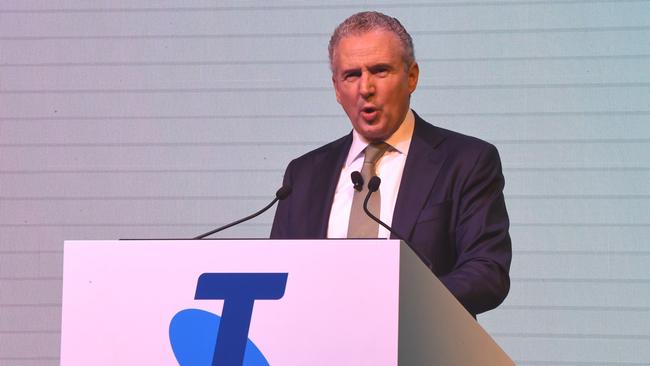Telstra must make its cuts in the right places
THE question is not whether Telstra needed to shed jobs, it’s whether it’s shedding the right jobs, writes Jennifer Dudley-Nicholson.
Rendezview
Don't miss out on the headlines from Rendezview. Followed categories will be added to My News.
IT’S a bad day to be a Telstra employee and, for once, it has nothing to do with a mobile phone outage.
Australia’s biggest telco today revealed Australia’s biggest corporate jobs cut.
The company will get rid of 8000 employees by 2022 — about one in four workers — in an effort to slash $1 billion from its costs.
Chief executive Andy Penn says the move is designed to help the company remain on top.
And while a cynical person could argue Penn has designed it to remain on top himself, the reality is these cuts were inevitable. They might as well have been announced in 2009.
Back then, Telstra was a bigger company with a bigger responsibility. It was fresh out of the final round of part-privatisation, it had millions of loyal broadband, landline, and mobile customers on the books, and it had only modest competition.
What company could hope to compete with a nationwide communications network built by a government over decades?
The answer was NBN Co.
The National Broadband Network started as an idea scribbled on a drink coaster, and formally became a company in April 2009.
It was a bold infrastructure project created to connect 90 per cent of homes and businesses to the internet at speeds of 100 megabits per second, and would mostly consist of fibre optic cable to replace the ageing copper phone lines and pay-TV cables Telstra had spent so long installing.
While the NBN’s design has changed over time — to a cheaper, slower, more problematic construction — its underlying aim remains the same. The NBN will replace our current broadband connections with its own.
Telstra even sold NBN Co large swathes of its copper and hybrid fibre coaxial cable network for the tidy sum of $11 billion. The final deal was signed in 2014, though Telstra is still using the networks while they’re progressively handed over to NBN Co.
The company knew back then it had met its match; that it would have to change radically. Today’s 8000 job cuts were at least four years in the making, if you’re being generous.
And a lot of networking and tech executive jobs have already moved. It’s no accident that NBN Co employed 6025 people by the end of last year, a figure up 11 per cent on the year before.

It’s hard to predict how many people will remain at NBN Co after it has connected all Australian homes by the end of 2020, but it’s a significant operation for a significant task. And no doubt some bright political spark will propose upgrades soon after it’s finished.
Telstra will be standing on the sidelines of all this, watching another company do what it once did. It will be in the position that Optus, iiNet, TPG, Ozemail, and PowerUp once were: queuing up to buy internet access from a larger provider.
That’s not to say that Telstra doesn’t have a place in the market. Australia has more mobile connections than it does people. Many of those smartphone-staring tech obsessives are eagerly awaiting 5G connections. Some are even planning to overlook the NBN for something with fewer (copper) strings attached. Telstra has a future. It’s just a leaner one.
The real question is not whether Telstra should cut jobs but whether it’s cutting the right roles.
People who use mobile connections need them to remain reliable. Telstra needs to retain employees with the technical know-how to design, implement and maintain these networks.
One could argue, given its bad run of mobile outages and multiple hardware disasters over the past month, it should increase its engineering staff.
And while today’s Telstra announcement featured plans to significantly cut back on the number of technical support calls, hopefully that’s because we won’t need to complain to Telstra, and not because there’s no one to complain to on the end of the phone line.
Jennifer Dudley-Nicholson is the News Corp national technology editor.


